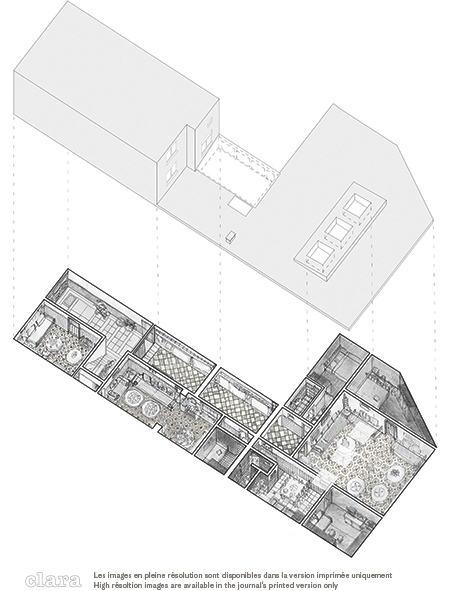Brussels and the Rif: living in migration
Main Article Content
Abstract
This text reports on a collective presentation concerning a doctoral research on the houses of families of Rifian (Moroccan) origin settled in Brussels. At the table were seven people who met on this research journey: Meryem and Najette, two inhabitants of a house in Brussels; Tamimount Essaïdi and Agnès Sikivie, two experts in Brussels associative networks; Mohamed Amin Benamraoui and Nedjma Hadj Benchelabi, two artists with links to the Maghreb; and an architecture student, Najoua Saadi. Each speaker described their attachment to a place, an object or a situation through complementary tools: drawings and photographs of architecture, extracts from cinematographic works, images of performances in public space. Before beginning the speakers' accounts, the text outlines the political and social framework of working-class immigration from the Rif to Brussels in the 1960s and 1970s. The presentation starts with the description of a house in Brussels, which was the subject of an architectural drawing called 'inhabited portrait', which takes into account the relationship between the building and the inhabitants' practices. The house is then deployed in its relationship with the urban space of Brussels, through the notion of intimate networks, and with the country of origin, through the notion of the triptych of houses. This last notion implies studying the house in Brussels in correlation with two Rifian houses: the one built by the former emigrants, called the house of return, and the one of childhood memories, the house of origins.
Article Details

This work is licensed under a Creative Commons Attribution-NonCommercial-NoDerivatives 4.0 International License.

